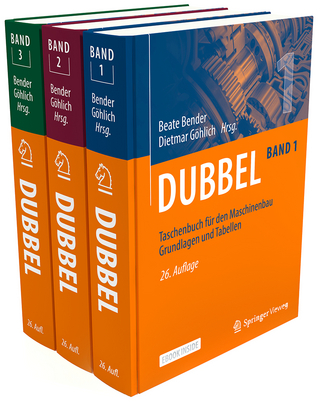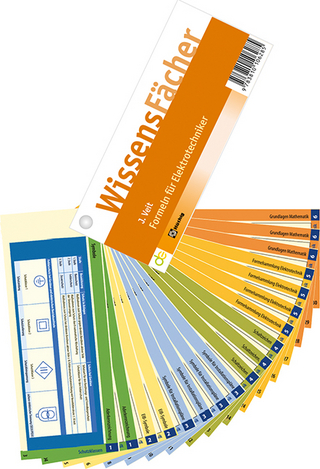
Modelling of High Complexity Systems with Applications
WIT Press
978-1-85312-778-6 (ISBN)
- Keine Verlagsinformationen verfügbar
- Artikel merken
This book is a research monograph, of an interdisciplinary scope, that brings together complexity system analysis, hybrid modelling and simulation, knowledge-based and fuzzy control engineering. The author takes PC-based numerical insights into solving natural systems problems, and man-developed systems problems, and exemplifies all his assertions. The book sets out to provide new methods and techniques for computer modelling of high complexity systems. Development of simulation and control techniques, and of problem-solving applications, is the aim. Modelling of High Complexity Systems addresses a large readership: computer scientists, system analysts, modellers, simulationists, control engineers, naturalists, ecologists, environment experts and managers, teachers, students/masters of science, doctoral students and others. Attached disk or CD provides the application software for modelling, simulation and control of high complexity natural systems, e.g. ecological systems (big lakes, rivers, river deltas, soil systems, forests, agro-ecosystems) and for environmental protection (diffusion of industrial chemical pollutants in urban atmosphere, air quality control).
Chapter 1: An introduction to high complexity systems; Definition; Principles of approaching high complexity systems; Chapter 2: Structure of high complexity systems; System dimension; System complexity; System non-linearity; Uncertainty in a high complexity system; Chapter 3: The principle of uncertainty in high complexity systems; Definition of uncertainty; Statement of the principle of uncertainty; Mathematical formalism of the principle of uncertainty. Evaluation theorem of uncertainty; The concrete form of uncertainties; Application of the principle of uncertainty; Chapter 4: Simulation models; Numerical simulation models; Knowledge-based simulation models; Mathematical-heuristic simulation and control models; A methodology of simulation models; Chapter 5: Knowledge base for modelling and simulation; Sequential logic and dynamic logic; Knowledge representation; Structure of the knowledge base; Knowledge acquisition; Chapter 6: Mathematical-heuristic modelling; Methodology for mathematical-heuristic model development; Compatibility between the mathematical model and the heuristic knowledge-based and/or fuzzy one. Theorems of compatibility; Application: a models library for simulation and control in ecology and environmental protection; Concluding remarks; Chapter 7: Stability of high complexity systems; Introduction; Mathematical-heuristic model for stability analysis and evaluation; Stability of control systems, described by mathematical-heuristic models; Case study; Concluding remarks; Chapter 8: Risk analysis and assessment in high complexity systems; Introduction; The mathematical-heuristic model of risk analysis and assessment; Risk assessment in high complexity systems; Case study; Chapter 9: Simulation of high complexity systems; Introduction; Simulation using knowledge processing; Simulation of systems using a mathematical-heuristic model; Case study; Chapter 10: Control of high complexity systems; Introduction; Control knowledge base; Knowledge-based control system; Fuzzy knowledge processing-based control system; Case study; Concluding remarks; Chapter 11: Application of high complexity systems to modelling of industrial systems; Introduction; Mathematical-heuristic simulation and control model of a discrete-time industrial process; Chapter 12: Application of high complexity systems to the modelling of power systems; Preliminary remarks; Mathematical-heuristic model for simulation and control of an electrical energy distribution system; Chapter 13: Application of high complexity systems to the modelling of macroeconomic systems; Introduction; Mathematical-heuristic model for a macroeconomic system; Concluding remarks; Chapter 14: Application of high complexity systems to the modelling of aquatic ecosystems; Mathematical-heuristic model of a river delta ecosystem; Mathematical-heuristic model for the seaside ecosystem; Chapter 15: Application of high complexity systems to the modelling of terrestrial ecosystems; Simulation and control model for the soil system; Simulation and control model for an agro-ecosystem; Simulation and control model for a forest ecosystem; Chapter 16: Application of high complexity systems to the modelling of industrial chemical pollutants diffusion in urban atmosphere; Introduction; Mathematical-heuristic model for industrial chemical pollutants diffusion in urban atmosphere; Concluding remarks; Chapter 17: Facilities for the operation of mathematical-heuristic models; Models Library; Microsoft Access databases; SQL_Server database; Web Portals for modelling and simulation and search engine; Chapter 18: Remarks on the mathematical-heuristic model in simulation and control of high complexity systems; General remarks on the mathematical-heuristic model; System complexity and the mathematical-heuristic model; System exergy and the mathematical-heuristic model
| Erscheint lt. Verlag | 25.12.2000 |
|---|---|
| Zusatzinfo | Illustrations |
| Verlagsort | Southampton |
| Sprache | englisch |
| Maße | 155 x 230 mm |
| Themenwelt | Technik ► Elektrotechnik / Energietechnik |
| Technik ► Umwelttechnik / Biotechnologie | |
| ISBN-10 | 1-85312-778-7 / 1853127787 |
| ISBN-13 | 978-1-85312-778-6 / 9781853127786 |
| Zustand | Neuware |
| Haben Sie eine Frage zum Produkt? |
aus dem Bereich


